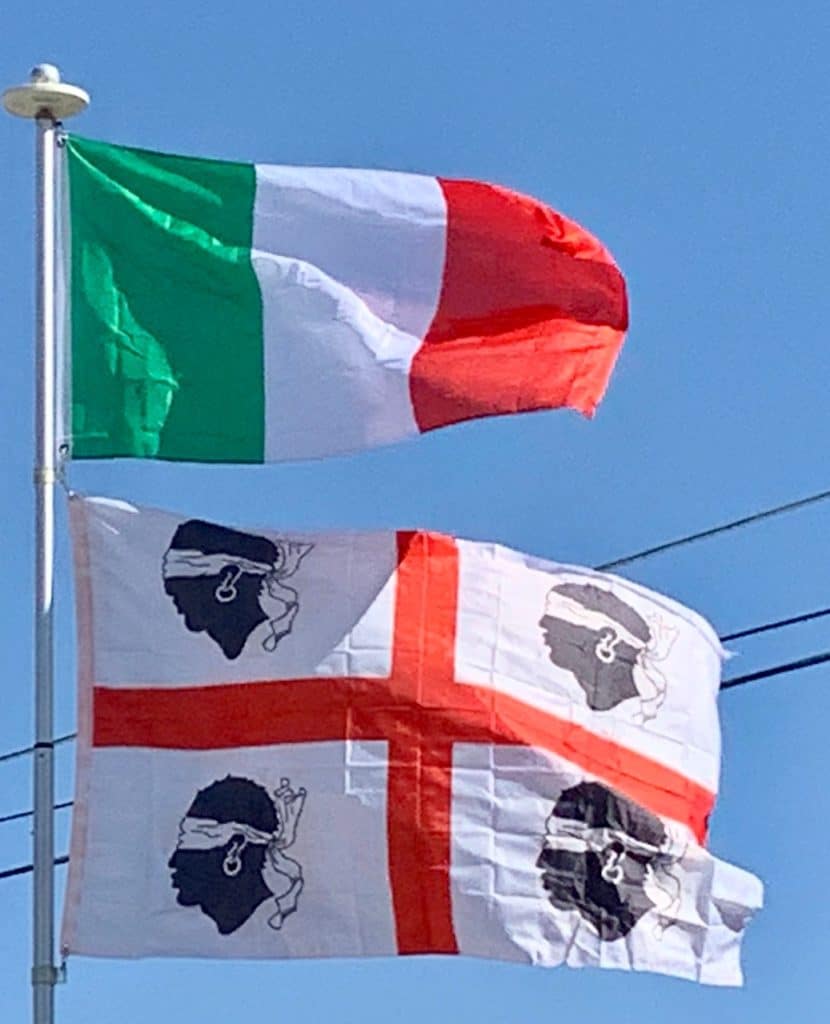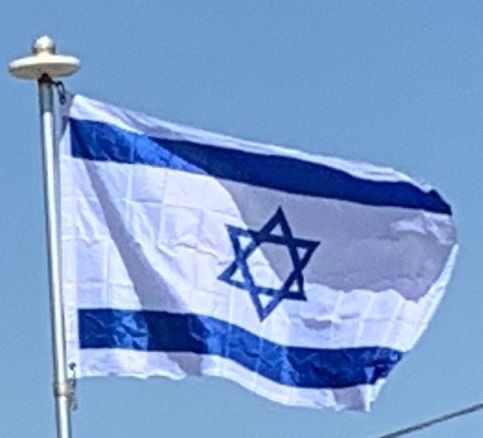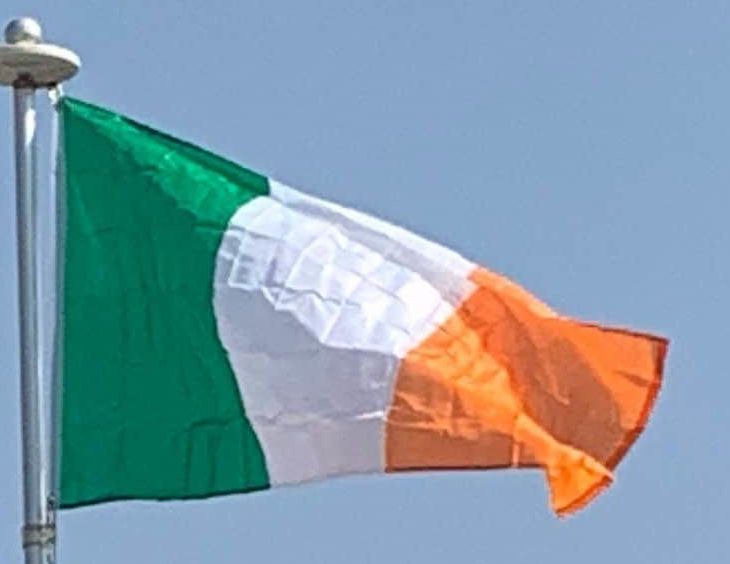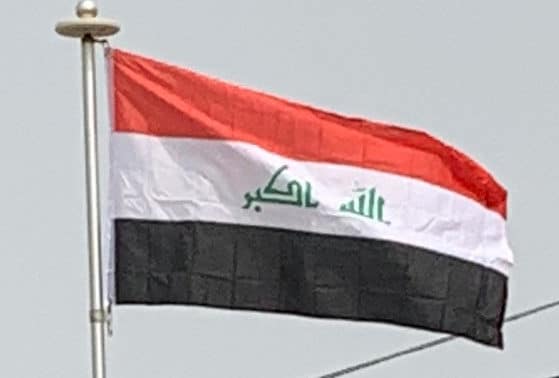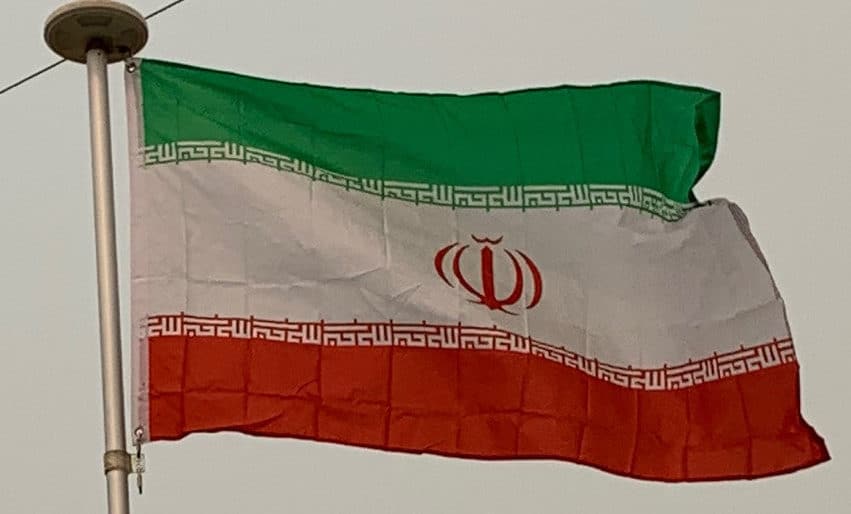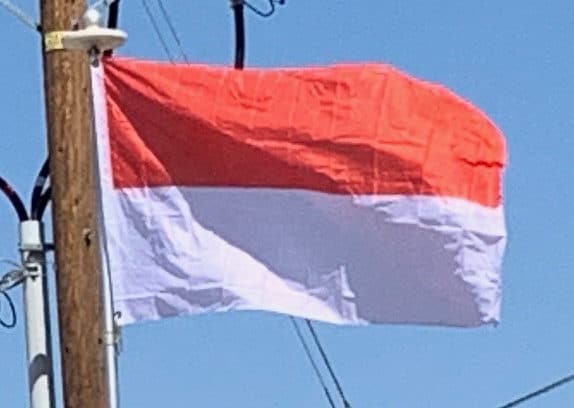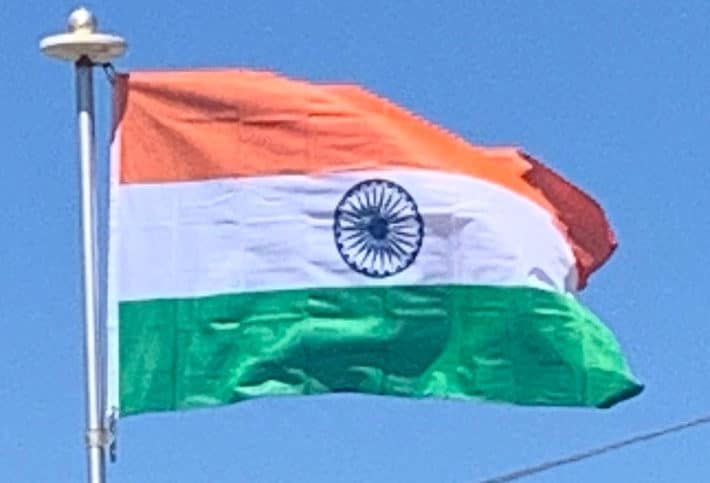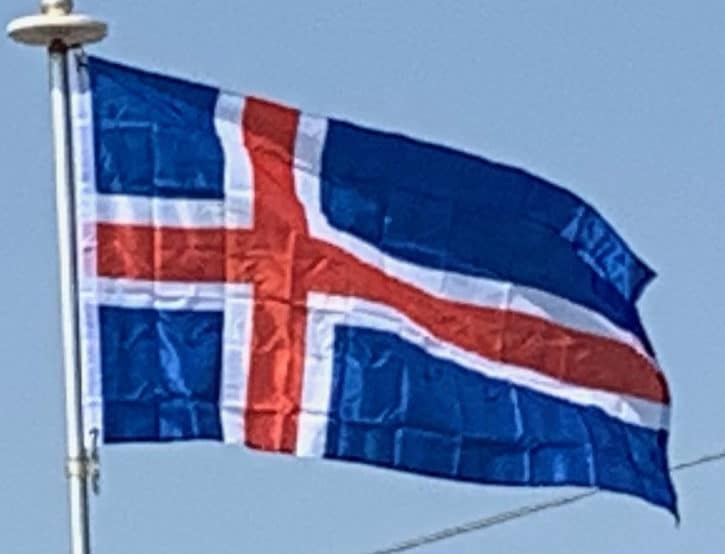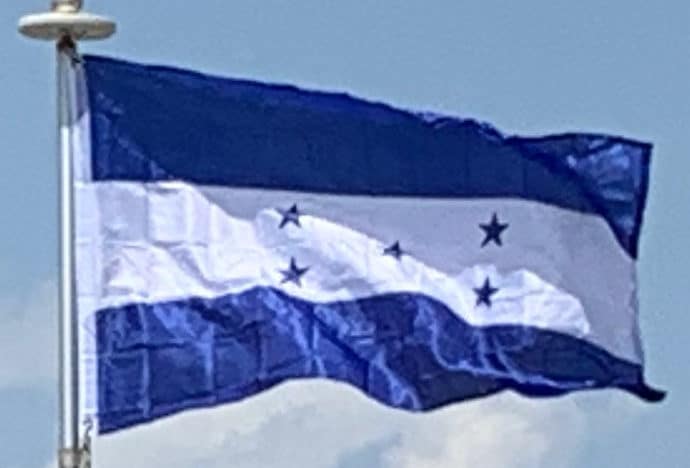Sardinia
The flag is composed of the St George’s Cross and four heads of Moors, which in the past may not have been forehead bandaged but blindfolded and turned towards the left. But already well-preserved pictures from the 16th century clearly show a forehead bandage. The most accepted hypothesis is that the heads represented the heads of Moorish princes defeated by the Aragonese, as for the first time they appeared in the 13th-century seals of the Crown of Aragon – although with a beard and no bandage, contrary to the Moors of the Sardinian flag, which appeared for the first time in a manuscript of the second half of the 14th century.
